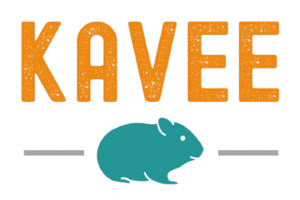Guinea pigs are tiny little things, so their carbon footprint is bound to be small. Yet, if you have committed to green living, you may be interested in knowing that there are ways to reduce their environmental impact.
So let's dive in!
1. Compost their organic waste
Guinea pigs produce a lot of organic waste: poop of course, but also any leftover hay and vegetables, wood or paper shaving. This waste is bulky and fills your bins pretty quickly. If you dispose of it in your typical household bins, it will be transported for miles before being burnt or worst - landfilled.
Instead, all of this could turn into incredibly nutritious compost for your garden. Did you know that some people buy rabbit poop to fertilize their garden? So if you have a garden or a composting scheme in your neighborhood, do the planet a favor and chuck it all in the composting bin.
2. Opt for reusable fleece liners
Disposable bedding is not a great choice for your pigs: they are dusty, which can cause respiratory issues. They also tend to stay moist for a long time and are a nightmare to clean. But did you know that disposable animal bedding can generate up to 32kg of household waste a year?! In the era of zero waste, switching to a reusable solution, such as fleece liners, is a smart choice! Not sure if that's for you? Check our ultimate guide to using fleece liners for guinea pigs.
3. Grow your own vegetables and herbs
Why buy veggies - likely imported from a different country and grown with questionable farming practices - when you can grow your own? Your guinea pigs will love the freshness of homegrown organic vegetables!
4. Feed your guinea pigs with organic and seasonal veggies
Avoid buying summer vegetables in the middle of winter! We all know that their production requires a large amount of energy and heat. Instead, purchase goodies from your local farm.
5. Forage for your guinea pigs
Guinea pigs feast on wild herbs and grass that are all around us! Learn a few (dandelion, nettle, mallow, etc..) and forage for them. That is a great way to spend time in nature while feeding your pigs with the best of the best.
6. Buy durable cages and toys
Make the right choice and choose your supplies wisely so that they last longer. Buying a C&C cage is ideal if you like to change your set-up regularly without having to buy a whole new pen altogether.
7. Avoid pellets containing soy, corn or wheat
Those nasty grains are fillers: they are not beneficial to your guinea pigs when fed daily. They are also detrimental to the planet, most of them being grown in large monoculture fields, requiring deforestation.
Conclusions
Those are only a few tips to care for your guinea pigs and the planet at the same time. Remember that nothing is too small when it comes to doing the right thing!





